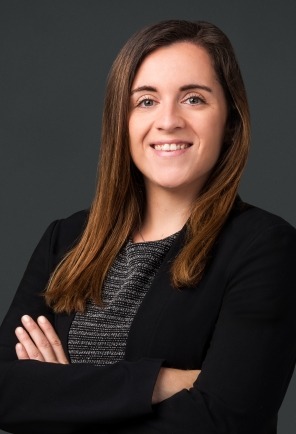MIDDLE EAST EXCISE TAX ALERT | UAE | FTA Publishes Clarification on Tiered Volumetric Model for Sweetened Drinks
On September 11, 2025, the FTA released Public Clarification EXTP012, setting out how Excise Tax will apply to sweetened drinks from January 1, 2026. The update confirms the long-anticipated shift away from a flat ad valorem rate of 50% towards a tiered volumetric model where liability is determined by sugar content.
These changes have significant implications for all businesses involved in the production, importation and distribution of sweetened beverages. New requirements include calculations for sugar content, reporting, product testing and registration. It also introduces several technical questions that remain to be clarified in the forthcoming implementing regulations.
Primary Changes
Under the current rules, sweetened drinks with any amount of added sugar, artificial sweeteners or other sweeteners are in scope of Excise Tax and 50% tax on its retail price. From January 2026, this system will be replaced by a volumetric tax, based on sugar content per 100 mL. The new model introduces three tiers:
- High sugar category – 8 g or more per 100 mL
- Moderate sugar category – between 5 g and 8 g per 100 mL
- Low sugar category – less than 5 g per 100 mL
- Drinks that contain only artificial sweeteners
This approach is intended to align the UAE with international best practice, encouraging reformulation and clearer product differentiation.
The existing regime also applies Excise Tax to beverages such as carbonated drinks, taxed at 50%, and energy drinks, taxed at 100%. Under the new clarification, the standalone category for carbonated drinks will be abolished. Instead, carbonated beverages will be assessed within the scope of sweetened drinks based on their sugar content. Where a carbonated beverage contains no added sugar or other sweeteners, it will fall outside the scope of Excise Tax.
Definitions of Sugars and Sweeteners
The amount of Excise Tax is based on the total sugar content. This includes:
- Natural sugars – those present in the raw ingredients, such as fructose in fruit juice.
- Added sugars – sugars introduced during processing, such as cane sugar or glucose syrup.
- Other sweeteners – a newly introduced category which is not formally defined in the clarification but is understood to cover sweeteners that are not chemically sugars. This may include items such as honey, agave syrup, or malt extract.
By contrast, artificial sweeteners (e.g. sucralose, aspartame, acesulfame-K) are explicitly excluded from the sugar calculation. Where a drink contains only artificial sweeteners and no sugar or sweeteners, it will still be considered a “sweetened drink” but will be subject to a 0% xcise rate. This is important to distinguish from those out of scope of Excise Tax. Beverages that have artificial sweeteners may still be in scope of registration and reporting requirements.
How Beverages Are Now Subject to Excise Tax
The table below summarises the Excise Tax treatment of beverages, setting out what will fall within scope based on different sugar and sweetener content, together with illustrative examples for each case.
| Beverage Content | Excise Scope | Excise Treatment | Example |
| Only naturally occurring sugars (no added sugar, no other sweeteners, no artificial) | Out of scope | No excise | 100% fruit juice with no additives |
| Only artificial sweeteners | In scope | 0% excise rate | Diet or zero calorie drinks, flavoured water with sucralose |
| Added sugar present (any amount) | In scope | Taxed according to sugar tier | Regular cola drinks, sweetened iced tea |
| Other sweeteners present (e.g. honey, syrups) | In scope | Taxed according to sugar tier | Honey-sweetened drink |
| Natural sugar plus artificial sweetener | In scope | Taxed according to sugar tier (excluding artificial sweetener) | Juice blend with added stevia |
| Combination of added sugar and artificial sweetener | In scope | Taxed according to sugar tier (excluding artificial sweetener) | Low sugar cola with sucralose blend |
When calculating Excise Tax under the tiered system, the sugar content assessment includes all natural sugars, added sugars and other sweeteners. For example, if a beverage contains 2 g of added sugar per 100 mL and 6 g of natural sugar per 100 mL, the presence of added sugar brings the product within the scope of Excise Tax. Both the added and natural sugar are then combined to determine the applicable tier. In this case, the total of 8 g per 100 mL places the beverage in the high sugar category (≥8 g per 100 mL).
Compliance Requirements
The clarification also introduces new procedural obligations. Businesses will be required to:
- Re-register or update their registrations for sweetened and carbonated drinks to reflect the new classification.
- Obtain a laboratory report from an FTA-accredited testing body confirming the sugar and sweetener content of each product. A list of accredited labs will be published by the FTA later. Reports from other labs will not be accepted.
- Treat any product without a lab report as provisionally high sugar until evidence is submitted, with scope to reclaim Excess Tax once documentation is in place.
What This Means for Businesses
The move to a tiered volumetric model is a major compliance and administrative requirement for businesses, especially those that manufacture beverages or manage large product portfolios. The new system calls for a much more data-driven approach than the current flat rate regime.
Businesses will need to review their product portfolios, ingredient by ingredient, check recipes and labelling, and update systems to track sugar content. Every drink will require a lab report from an FTA-accredited testing body, and any product without one will be treated as high sugar until proof is provided. This is likely to be especially challenging for importers and distributors handling international brands.
Even small changes in formulation could move a drink into a lower excise tier, making reformulation an option worth considering. The FTA is expected to release transitional guidance later, but preparation should start now to avoid bottlenecks in 2025. The right preparation will support a compliance-driven approach and could also give businesses an opportunity to reduce the amount of Excise Tax they ultimately pay.
How A&M Can Help
Alvarez & Marsal’s Indirect Tax team is closely monitoring these changes and working with businesses to prepare for the introduction of the tiered volumetric model. We can support you in reviewing product portfolios against the new sugar thresholds, updating registrations and classifications, and managing the practicalities of excise compliance under the new rules.



